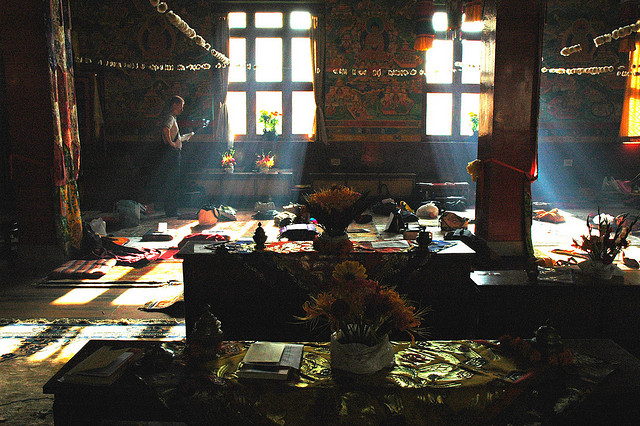The spiritual journey needs to start somewhere, and the contemplative way is to begin by focusing on ourselves.
According to the dharma, every state of mind can be worked with and everyone can benefit from mindfulness practice. Therefore, whatever we are experiencing right now is exactly what we need to work with and where the journey begins.
The spiritual journey often begins when we have hit bottom and are suffering deeply. It may be essential at this time to work with a trusted and experienced therapist until we are stable enough to confront and work directly with our own mind. Even though it is up to us to do the inner work of meditation practice, it is also important to enlist the help of others in our recovery.
The best medicine is to combine our work in psychotherapy with our spiritual practice.
Even if we have not totally bottomed out, but rather are starting to admit our overall dissatisfaction with life. On the outside, everything looks okay, but on the inside there is an empty feeling that nothing seems to fill. This is where dharma practice is especially helpful. The teachings encourage us to stop looking outside for our happiness. Rather, the instruction is to sit down, focus on our breath, and begin to look inside. Once we start to practice in this way, we will see how genuine happiness comes from within. It is not dependent on anything external.
Facing our dissatisfaction with life is not easy, but connecting with how badly we want to feel better is what gives us the motivation to do the work. In other words, we need the tools to be able to stay present and directly experience our suffering so that we can rouse the energy to get out of our suffering. This does not mean that we sink so far into despair that we are traumatized again. It means that we touch into our pain, see it for what it is, just enough to get to the root of how this whole thing started. This understanding is what allows us to develop compassion for ourselves and all the creative ways we tried to cope with the situations we were given.
We begin to see how we keep the momentum of our childhood psychological conditioning alive in our mind today. In subtle and gross ways, we perpetuate those patterns upon ourselves.
Interrupting this cycle, is what the Buddhist term, renunciation is all about. We can’t go back in time to change the past and what happened to us. We can only start now by taking hold of our situation and giving up those habitual patterns of thinking, feeling, and behaving that keep us stuck. Even if we are not able to totally give up the habits, just by disrupting the momentum a little bit, we gain the upper hand so that they don’t have such a firm hold on us. We can use our mindfulness practice to help us stay closer with our personal experience. If we continue to distract and numb out we won’t be in touch with how we keep the unhealthy patterns alive in our own psyche. We won’t be able to see the self negating beliefs clearly enough to remove them. We need to uproot the cause itself, the things we continue to do and say to ourselves that keep the whole cycle going.
We can’t change the past, but we can change the way we treat our body, heart, and mind in the present moment. Remember that it is important to appreciate where we have gotten ourselves today, whatever that looks like. Even if we wish we were further along in our healing, we can feel good about all the work that we’ve done to be where we are right now.
The whole point of the spiritual journey is to find a sense of wealth by having contentment with who we and where we are every step of the way.
Author: Tina Fossella
Editor: Renée P.
Photo: Wonderlane at Flickr











Read 0 comments and reply